Why Cracks In Tire Sidewall Are A Serious Safety Concern
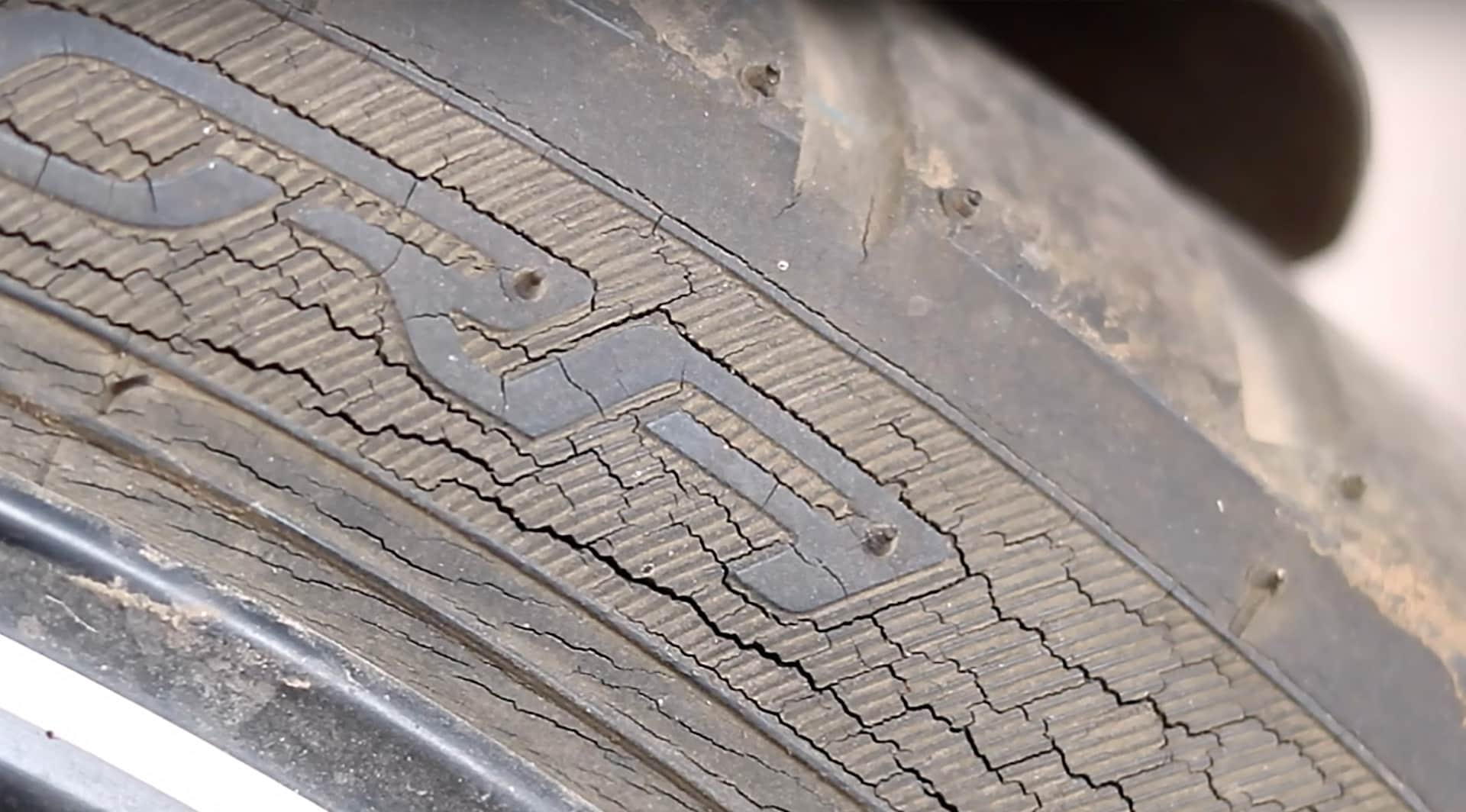
While they may not seem like a big problem at first, cracks in the tire sidewall can be dangerous and potentially lead to blowouts or other issues with tire integrity.
In this article, we’ll cover some of the common causes of cracking in tire sidewalls as well as tips for preventing these problems from occurring.
Key Takeaways
When Are Cracks In Tire Sidewall Unsafe?
Driving on tires with minor, superficial sidewall cracks is generally safe so long as the crack isn’t growing or spreading. The small tire cracks are fairly common and don’t necessarily indicate a serious issue. However, it’s important to keep an eye on them and replace the tire if the crack increases.
This is because the cracking can lead to rapid wear and tear on the tire. In some cases, a small number of visible cracks can quickly become several major cracks that put your tire at risk of a potentially dangerous sidewall blowout.
The appearance of cracking between your tire treads should never be ignored, as it could indicate a serious compromise to the structural integrity of the tire. In this case, it's best to have a qualified tire professional conduct an inspection and replace the tire if necessary—even if there is still adequate tread depth remaining.
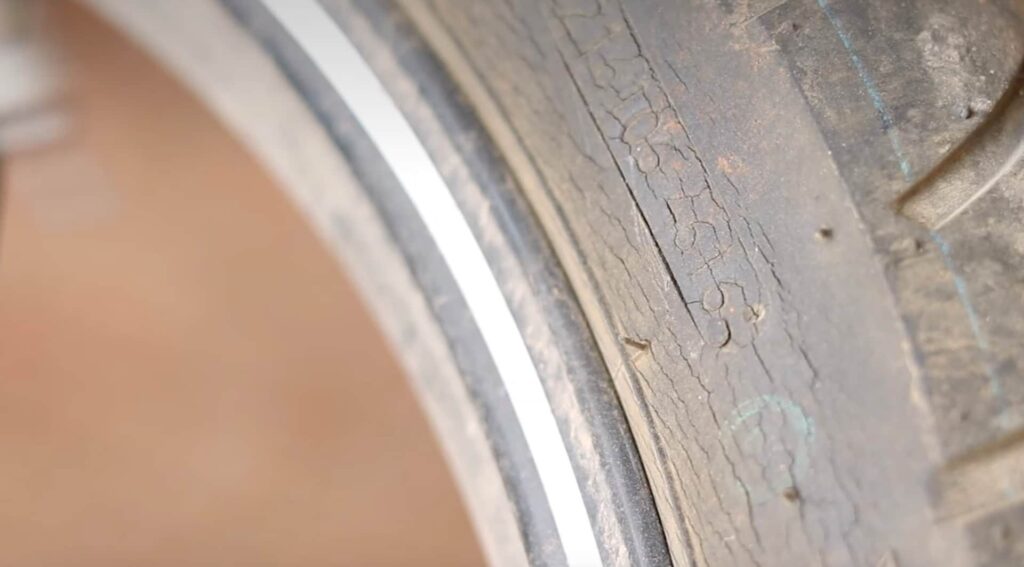
Understanding The Causes Of Cracks In Tire Sidewalls
1. Age And Weathering
Tires don’t last forever, and age is one of the factors that contribute to cracks in tire sidewalls. Over time, exposure to the elements like sunlight and extreme temperatures can weaken the rubber compounds in tires, causing them to dry out and crack. In general, experts recommend replacing tires once they reach six years of age.
2. Improper Storage
Improper storage conditions can also accelerate tire aging. Tires stored outdoors or exposed to direct sunlight are more likely to develop cracks than those kept in a cool, dry place. Ultraviolet (UV) rays from the sun are particularly damaging to tires since they break down anti-aging chemicals in rubber compounds.
3. Improper Inflation
When a tire is underinflated or overinflated, it can lead to cracks in the tire sidewall. Underinflation also causes excessive heat buildup, which can lead to tread separation or blowouts while driving.
It’s important to regularly check your tires’ psi levels with a good-quality pressure gauge. Over time, most tires will lose air naturally due to permeation through the rubber compound.
Remember that changes in outdoor temperature can cause fluctuations in your tire pressure; hence regular monitoring and adjustment of inflation levels are crucial for safe driving!
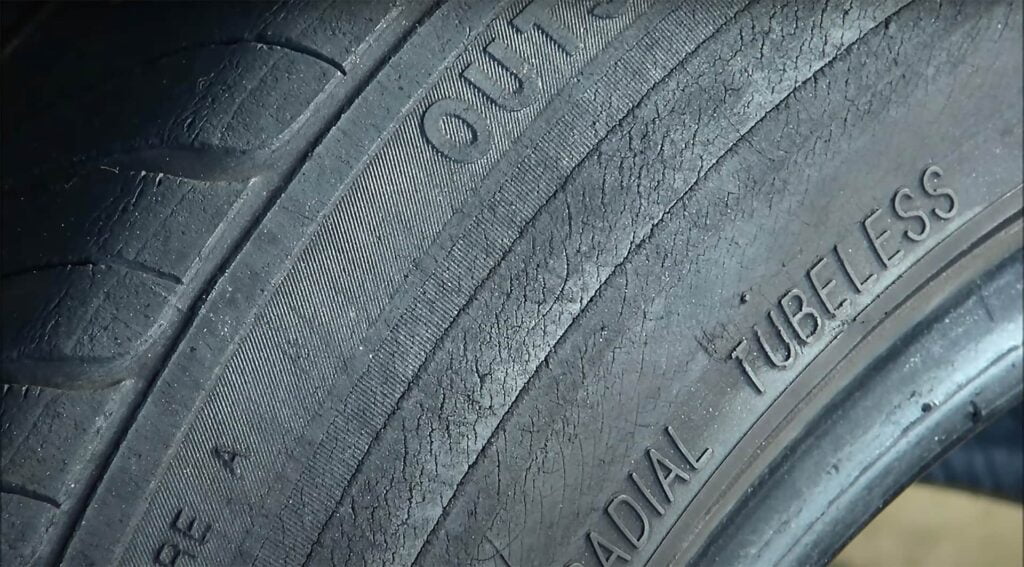
4. Overloading and hard-driving
Overloading your vehicle puts extra stress on your tires, causing them to wear out faster and increasing the likelihood of cracks appearing. Avoid driving in harsh conditions such as deep mud or areas with lots of sharp debris as these elements can damage the rubber and cause small cracks that eventually lead to major ones.
5. Excessive Heat Exposure
Excessive heat exposure is another common cause of tire sidewall cracking. When tires are exposed to high temperatures for extended periods, the rubber compounds break down and weaken. This can lead to cracks in the tire’s sidewall and tread area.
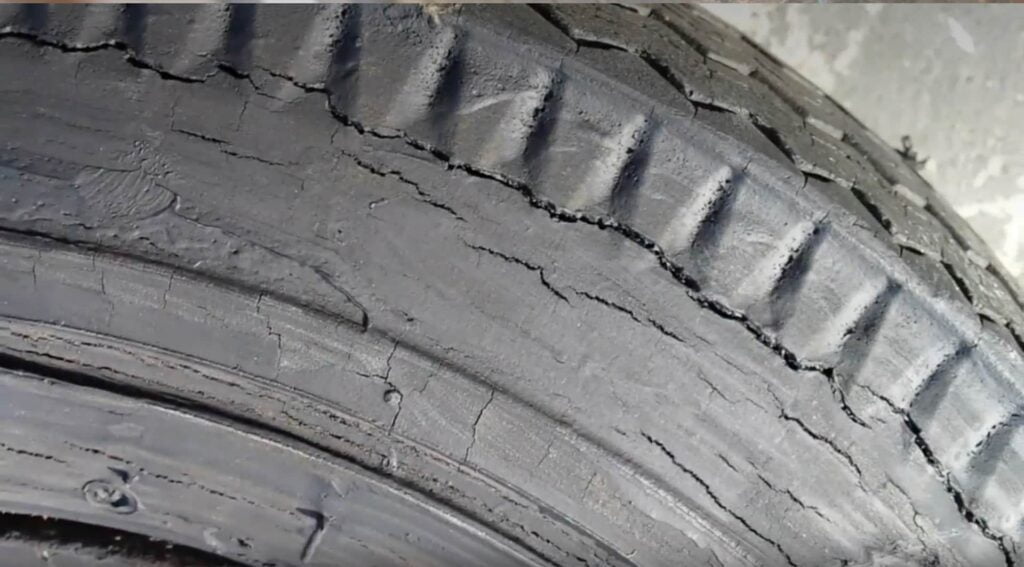
Preventing Cracks In Tire Sidewalls
To prevent cracks in tire sidewalls, make sure to regularly check your tire pressure, rotate and balance your tires, avoid overloading your vehicle, and store tires in a cool dry place.
1. Regularly Check Tire Pressure
Regularly checking the pressure of your tires is a necessary part of maintaining them. Improper tire inflation can lead to cracks in the sidewall and reduce their lifespan. It’s important to check your tire pressure once a month or before any long trips.
2. Rotate And Balance Your Tires
Regularly rotating and balancing your tires is essential to keep them in good condition. This process helps ensure that each tire wears out evenly, reducing the risk of cracks forming on the sidewalls.
3. Avoid Overloading Your Vehicle
When too much weight is placed on your tires, it puts excessive pressure on them which can lead to cracks in the sidewall.
To avoid overloading your vehicle, make sure you’re aware of its maximum load capacity. You should never exceed this limit as it could compromise not only your tires but also other parts of the car or truck.
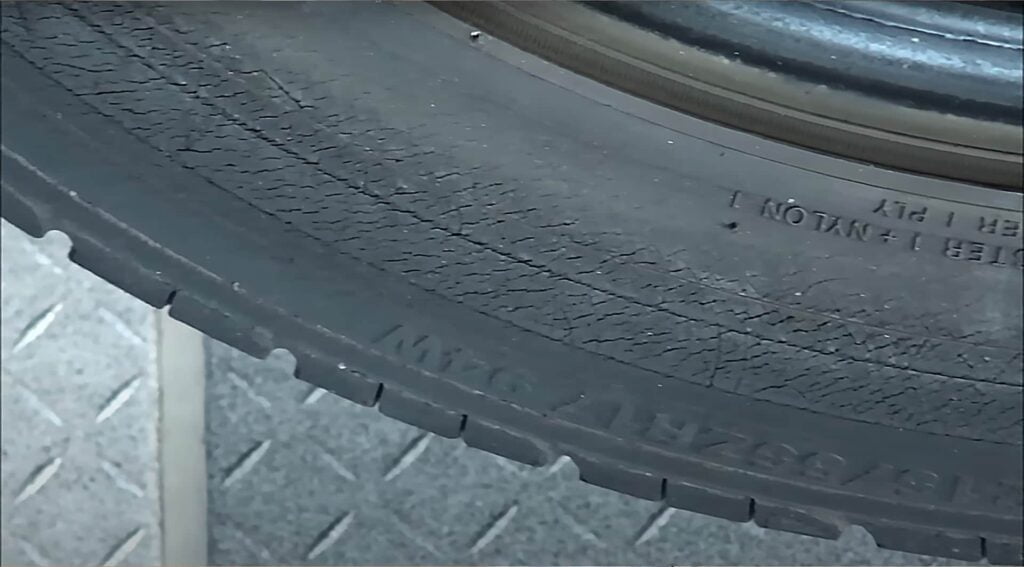
4. Avoid Harsh Driving Conditions
Driving on rough terrain or in extreme weather conditions can cause significant damage to your tires. Potholes, sharp objects, and bumps can lead to sidewall cracks, bulges or punctures that could affect the performance of your tire.
Additionally, driving under harsh weather such as intense heat or freezing temperatures could hasten the aging process of your tire rubber and eventually cause them to crack prematurely.
5. Store Tires In A Cool, Dry Place
Proper storage is key to keeping your tires in good condition and preventing cracks from forming on the sidewalls. Ideally, you should store your tires in a cool, dry place away from direct sunlight or any sources of heat that can accelerate their aging process.
Related Reading: Why Does Tire Rubber Crack? | Tire Rack
Final Words
In conclusion, tire sidewall damage is not something to take lightly. Small cracks may seem like a minor issue, but they can eventually lead to major problems such as blowouts and loss of control while driving.
Regular tire maintenance is key in keeping your tires safe and prolonging their lifespan. The tire care routine includes regularly checking your tire pressure, rotating and balancing your tires, avoiding overloading your vehicle, storing tires in a cool dry place when not in use, and replacing any cracking or damaged tires immediately.
Remember that prevention is better than cure when it comes to tire sidewall damage. Don’t wait until it’s too late – keep an eye out for signs of cracking or other wear and tear on your tires so you can stay safe on the road. Drive safe!
FAQs:
What Exactly Is Tire Sidewall Damage?
Tire sidewall damage refers to any kind of physical harm, such as cuts or bulges, that affects the side wall portion of a tire.
Why Is Tire Sidewall Damage Dangerous?
If left unaddressed, tire sidewall damage can result in sudden and unexpected blowouts while on the road. In turn, this can cause serious accidents and potentially life-threatening injuries.
How Can I Detect If My Tires Have Suffered From Sidewall Damage?
Inspect your tires regularly for any obvious signs of wear and tear or visible damages to the sidewalls. Look out for anything unusual such as cracks, deformations or punctures that could indicate deterioration.
What Should I Do If I Suspect My Tires Have Sustained Some Form Of Damage To Their Sidewalls?
Take them immediately to an experienced mechanic who will be able to evaluate whether they are still safe for use on the road or not.
Never attempt repairing damaged tires yourself as doing so could put you at risk of further injury and accidents down the line.
